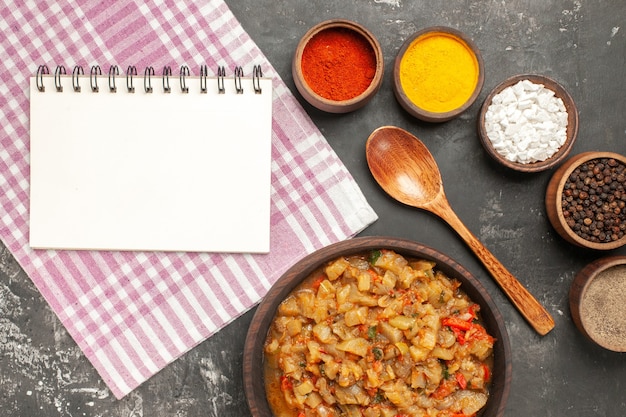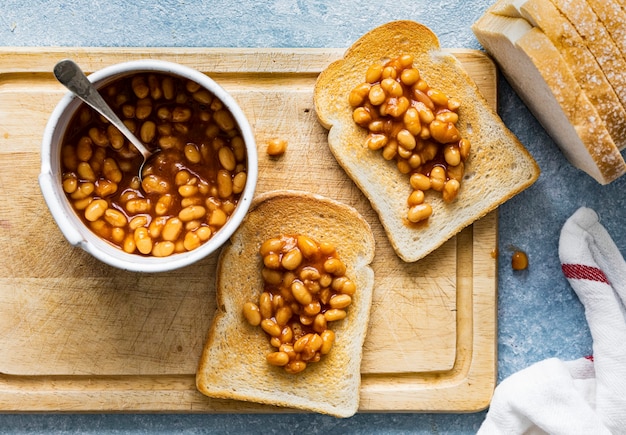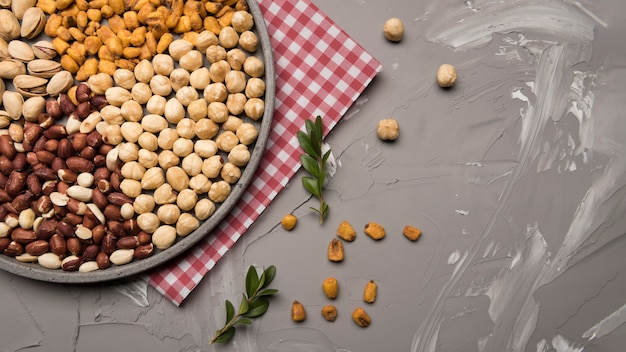Right, let's get down to business and talk about chickpeas. Honestly, I used to think these little guys were a bit boring. You know, just the standard addition to a salad or a curry, nothing too exciting. But oh, how I was wrong! These versatile little legumes have become a staple in my kitchen, and I’m going to share all my secrets so you can cook them like a pro too.
This guide is your one-stop shop for everything you need to know about chickpeas. From choosing the perfect beans to mastering different cooking methods, we'll cover it all. And trust me, once you’ve got a good grasp on the basics, you can unleash your creativity and turn them into a myriad of delicious dishes.
Part 1: Choosing the Right Chickpeas

The first step to delicious chickpeas is choosing the right ones. It might seem obvious, but there are a few things to keep in mind, especially if you're aiming for that perfect flavour and texture.
Fresh vs. Dried: The Convenience Factor
I’ll be honest, I usually opt for canned chickpeas. They’re super convenient, readily available, and let’s face it, who has time to soak and cook beans from scratch? However, if you're feeling ambitious or want to save a bit of cash, dried chickpeas are a great option. They offer a slightly more robust flavour and are generally cheaper than canned.
If you're going with dried, make sure you get the good stuff – plump, firm beans with no discolouration. Don't hesitate to give them a good rinse before soaking. This helps remove any dust or debris, ensuring your beans are clean and ready to go. It's a little extra effort, but trust me, you'll taste the difference!
Organic or Conventional: Making a Choice
Personally, I prefer organic whenever possible. It’s not just about the taste but also about sustainability and minimising pesticide exposure. But ultimately, the choice is yours. If you're on a budget, conventional chickpeas are perfectly fine. Just be sure to rinse them thoroughly before cooking.
Part 2: Soaking and Cooking Dried Chickpeas: The Art of Patience

Ok, let's tackle those dried chickpeas. I know it might sound daunting, but trust me, it's super easy. Just remember the magic words: soak and simmer.
Soaking 101: Setting the Stage
Start by rinsing your dried chickpeas in a colander. Then, give them a good soak overnight in plenty of water. The general rule of thumb is to use about 3 times the volume of water to the chickpeas. This softens them up, making them easier to cook and cutting down on cooking time.
If you’re short on time, you can quick soak them for 2 hours in boiling water. This option isn’t ideal as it can sometimes cause the beans to crack, but it’ll get the job done if you need them cooked quickly.
Simmering to Perfection: A Culinary Dance
After soaking, drain the chickpeas and transfer them to a large pot. Add about 3 cups of fresh water, a bay leaf (for that extra flavour), and a pinch of salt. Bring it to a boil, then reduce the heat to a simmer and cook for about 45-60 minutes or until tender.
To test for doneness, use a fork. If it goes through easily and the bean is tender, they’re ready. If they’re still a little firm, cook them for another 15-20 minutes.
Here’s a little tip: If you're making a dish that requires the chickpeas to be whole, like a salad, you can cook them slightly less. But if you're making something like hummus, you'll want them to be super tender.
Part 3: Canned Chickpea Prep: The Quick and Easy Option

Alright, now let’s talk canned chickpeas. The beauty of canned chickpeas is they’re ready to go straight from the can. But they can often be a bit salty, so it’s best to give them a good rinse before using them.
To rinse canned chickpeas, simply drain them in a colander and run cold water over them until the water runs clear. Then, you can use them in your recipes as is, or give them a little extra flavour by adding some spices or herbs. I sometimes add a dash of cumin or turmeric for an extra kick.
Here's a little tip: If you're using canned chickpeas in a dish where you want them to be slightly firm, like a salad or a grain bowl, you can skip the rinsing step. But if you're using them in a dish where you want them to be softer, like a soup or stew, rinsing them will help to remove some of the excess salt.
Part 4: Exploring Different cooking techniques: A culinary adventure
Now that you’ve got your chickpeas ready, it's time to get creative! There are so many ways to cook them, from simple to more adventurous.
The Classic: chickpea curry: A Taste of Tradition
Let’s be honest, a good chickpea curry is a culinary masterpiece. It’s warm, comforting, and bursting with flavour. The best part? You can easily customize it to your liking.
I usually start with a base of onions, garlic, and ginger, then add in my favourite spices like turmeric, coriander, cumin, and chili powder. Throw in some diced tomatoes, coconut milk, and a handful of chickpeas. Let it simmer for about 20 minutes, and you’ll have a curry that’ll make you feel like you're on holiday.
Here's a little tip: If you want to add a bit of extra depth of flavour, try adding a pinch of garam masala to your curry.
The Healthy Choice: Roasted Chickpeas: A Crunchy Delight
Roasted chickpeas are a great snack or a side dish. They’re packed with protein and fibre and are incredibly easy to make.
Simply toss drained chickpeas with a little olive oil, salt, pepper, and your favourite spices. I like to add a mix of paprika, cumin, and garlic powder. Spread them out on a baking sheet and roast in a preheated oven at 400°F for about 20-25 minutes, or until golden brown and crispy.
Here's a little tip: To get extra crispy chickpeas, toss them with a little cornstarch before roasting.
The Unexpected: chickpea salad: A Light and Refreshing Option
Don't underestimate the power of a chickpea salad. It's a great way to add some protein and texture to your meals.
My favourite version combines chickpeas with chopped celery, onion, and parsley, and a lemon-tahini dressing. It's light, refreshing, and perfect for lunch or a side dish.
Here's a little tip: If you want a creamier chickpea salad, try adding some mashed avocado or a dollop of hummus.
Part 5: Mastering the Art of chickpea flour (Besan): A culinary gem
You know, chickpeas have a secret talent. They’re the main ingredient in besan, a delicious and versatile flour that can be used in a whole range of recipes.
What is Besan? The Flour of Many Uses
Besan is essentially chickpea flour. It’s made by grinding roasted chickpeas into a fine powder. It’s a staple in Indian cuisine and is used in dishes like pakoras, dhokla, and chana dal.
Using Besan in Recipes: Unleashing the Potential
Besan is a gluten-free flour, so it’s a great option for those with gluten sensitivities. It’s also incredibly versatile and can be used to make a variety of dishes, from savoury to sweet.
Try making besan pancakes, chickpea fritters, or even use it as a thickener in soups and sauces.
Here's a little tip: If you're using besan to make a batter, add a little bit of water at a time until you reach the desired consistency.
Part 6: Adding Chickpeas to Your Favourite Dishes: A Taste of Versatility
Now that you’ve got the basics down, let’s explore how to use chickpeas in your everyday cooking. Think of them as a secret ingredient that adds texture, flavour, and a boost of protein to your dishes.
Boosting Salads: A Hearty Addition
Let’s start with salads. Chickpeas add a wonderful texture and hearty protein. Throw some into your next salad for a satisfying and nutritious meal. I like to add them to a simple green salad with feta cheese, olives, and a lemon vinaigrette.
Here's a little tip: If you want to add a bit of extra flavour to your chickpea salad, try roasting the chickpeas before adding them to your salad.
Enhancing Soups and Stews: A Creamy Twist
Soups and stews are another great way to incorporate chickpeas. They absorb the flavours of the broth and add a creamy texture.
Try adding chickpeas to your next lentil soup, vegetable stew, or even your favourite chicken soup. You won’t regret it!
Here's a little tip: If you're adding chickpeas to a soup or stew, try adding them in the last 15-20 minutes of cooking so they don't become mushy.
Adding Texture to Grain Bowls: A Modern Delight
Grain bowls are all the rage these days, and chickpeas are the perfect addition. They add a bit of crunch and extra protein to your bowl of quinoa, rice, or barley.
Get creative with your toppings and try adding roasted chickpeas, hummus, or even some chickpea salad to your bowl.
Here's a little tip: If you're adding chickpeas to a grain bowl, try adding them along with some other toppings like roasted vegetables, nuts, and seeds.
Part 7: From Chickpeas to Hummus: A Delicious Journey
Of course, we can't talk about chickpeas without mentioning hummus. This creamy dip is a true culinary gem and is loved by people all over the world.
The Basics of Hummus: A Simple Yet Perfect Recipe
Hummus is essentially a blend of chickpeas, tahini (sesame seed paste), garlic, lemon juice, and olive oil. It's a simple recipe, but the flavour combinations are endless.
Creating Your Own Hummus: Unleashing Your Creativity
Don’t be afraid to experiment with your hummus recipe. Add in spices like cumin, paprika, or even a touch of chili powder for a kick. You can also add chopped herbs like parsley or cilantro for a fresh touch.
Once you’ve mastered the basics, you can try making different types of hummus, like roasted red pepper hummus, beet hummus, or even chocolate hummus!
Here's a little tip: If you want a smoother hummus, blend it for a longer period of time.
Part 8: The nutritional powerhouse: Benefits of Chickpeas: A Healthy Treat
Apart from being delicious and versatile, chickpeas are also incredibly good for you. They’re packed with nutrients and offer a range of health benefits.
Protein Packed: Fuel for Your Body
Chickpeas are a great source of protein, making them a perfect choice for vegetarians and vegans. A single cup of cooked chickpeas contains about 15 grams of protein!
Fibre-Rich: Keeping You Full and Satisfied
They’re also packed with fibre, which helps keep you feeling full and satisfied. Fibre is also essential for digestive health.
Good Source of Minerals: A Nutrient Boost
Chickpeas are a good source of iron, magnesium, zinc, and folate. All of these minerals play important roles in maintaining good health.
Part 9: Frequently Asked Questions
1. Can I Freeze Chickpeas?
Absolutely! Both cooked and canned chickpeas can be frozen. Simply spread them out on a baking sheet and freeze them until solid. Then transfer them to a freezer-safe bag or container.
2. How Long Can I Store Chickpeas in the Fridge?
Cooked chickpeas can be stored in the fridge for up to 3-4 days. Just make sure they’re stored in an airtight container.
3. What Are Some Good Substitutes for Chickpeas?
If you're looking for substitutes for chickpeas, you can use other legumes like lentils, black beans, or kidney beans. They’ll add similar texture and nutritional value to your dishes.
4. Can I Use Chickpeas in Baking?
Yes! Chickpeas can be used in baking, particularly in recipes that require a moist and dense texture. They’re often used in brownies, cookies, and even bread.
5. Are Chickpeas Gluten-Free?
Yes, chickpeas are naturally gluten-free. They’re a great option for people with gluten sensitivities or celiac disease.
Part 10: The Chickpea Journey Continues: A Culinary Adventure Awaits
And there you have it – your comprehensive guide to cooking chickpeas like a pro. From choosing the right beans to experimenting with different recipes, I hope this guide has inspired you to unleash your inner culinary creativity.
Remember, chickpeas are a versatile and delicious ingredient that can be enjoyed in countless ways. So get cooking, experiment, and most importantly, have fun!
Everyone is watching

Prime Rib Roast Cooking Time Chart: Per Pound Guide
Cooking TipsPrime rib roast. Just the name conjures images of lavish dinners, crackling fires, and hearty laughter. It’s ...

How Long to Bake Potatoes in the Oven (Perfect Every Time)
Cooking TipsBaked potatoes are a staple in my kitchen. They're incredibly versatile, delicious, and surprisingly easy to m...

Perfect Rice Every Time: The Ultimate Guide to Cooking Rice
Cooking TipsAs a self-proclaimed foodie, I've always been a bit obsessed with rice. It's the foundation of countless cuisi...

The Ultimate Guide to Cooking Asparagus: Tips, Techniques, and Recipes
Cooking TipsAsparagus. The mere mention of this spring delicacy conjures up images of vibrant green spears, crisp and burs...

Ultimate Guide to Cooking the Perfect Thanksgiving Turkey
Cooking TipsThanksgiving. Just the word conjures up images of overflowing tables laden with delicious food, the scent of r...
